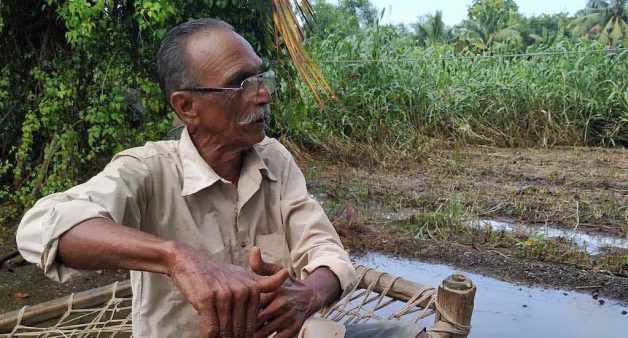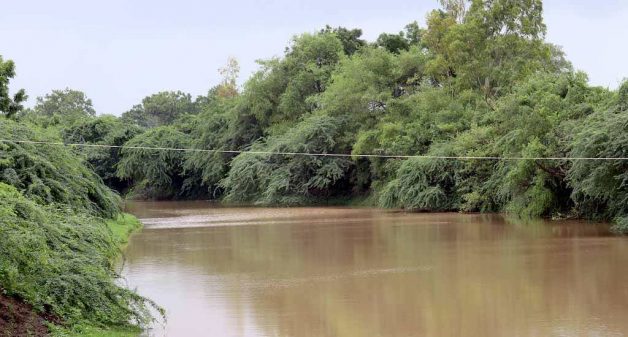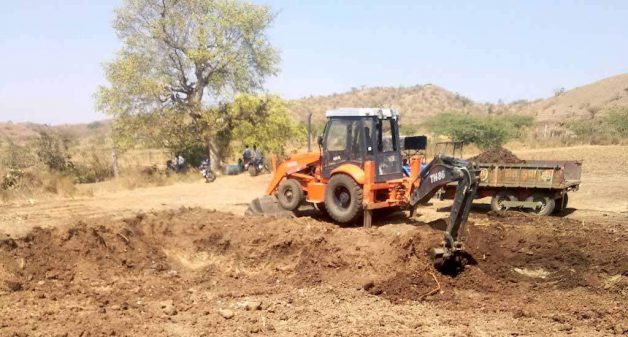
Smart water management mitigates coastal salinity
Rainwater harvesting, groundwater recharge through ponds and desilting of check dams have curtailed salinity ingress in coastal Gujarat, increasing freshwater availability

Rainwater harvesting, groundwater recharge through ponds and desilting of check dams have curtailed salinity ingress in coastal Gujarat, increasing freshwater availability
The first sign of salinity appeared less than a decade ago, when residents of Ishwara village noticed the soil wearing a whitish look. The cattle seemed less inclined to drink water in the field even on a hot day. When they exchanged notes, the farmers of Ishwara in Bhavnagar district of Gujarat found it to be a common observation.
Ishwara village in Talaja block, at about 7 km from the Arabian sea, has been in the grip of salinity ingress, which is advancing at the rate of 0.5 km per year. When the area’s groundwater became increasingly saline, crops started failing.
“I suffered a loss of Rs 50,000 when my groundnut crop failed for the first time a few years ago,” said farmer Vijay Giri Goswami. With repeated failures and subsequent losses, five years ago he stopped growing groundnut, a common crop in Gujarat.
In nearby Gorkhi Gaon village, 72-year-old Dhirubhai Dhudiya said that the 400 coconut trees in his 2-acre land has sustained his family for years. “In the last few years, the size of the coconuts has reduced and the yield per tree has come down almost by 50%,” he told VillageSquare.in.
While salinity ingress affected the life and livelihood of villagers in coastal Gujarat, water resource management techniques like rainwater harvesting, and desilting of check dams helped tackle the problem. The simple solutions have also led to increased availability of water for farming and domestic needs.
Salinity ingress
The impact of salinity has been more in the 1,500-odd coastal villages of Gujarat as it has the country’s longest coastline of 1,600 km. According to the Coastal Salinity Prevention Cell (CSPC), as against the global average of 7%, in Gujarat 12% of the land is saline.
As Goswami and Dhudiya narrate from experience, the scenario was not always this bad. According to a 2017 Status of Coastal Salinity Report by the Gujarat Ecology Commission (GEC), the entire coastline had “sweet water until the end of the 1960s”.

According to the report, between 1970 and1977, groundwater salinity increased from 3,500 ppm to 9,000 ppm at a distance of 2 km from the coast, and from 860 ppm to 2,060 ppm at a distance of 5 km from the coast.
Non-potable groundwater
In Ishwara, the effect was not felt until about a decade ago but has increased since then. Punamchand Jalela, a schoolteacher who also cultivates cotton and other crops, said that groundwater salinity has increased so much that they could no longer use the water from their fields to make tea.
Tea breaks in between work in the fields is a common practice. “But now we have to carry water in bottles and buckets from home to the fields every day,” Jalela told VillageSquare.in. Ishwara gets piped water supply from River Narmada.
The effect was also seen on livestock and their productivity. “Earlier, the animals would graze in the open fields and drink water there. Slowly, they started drinking less water, no matter how hot the day was,” said Jalela. Left with no choice, people started bringing their animals home for water.
Financial implications
“With less water consumption, productivity of the cattle has decreased,” said Jalela. “A cow which normally gave 4 to 5 liters of milk every day, started giving 2 to 3 liters. We also noticed an increase in infertility.” This had an impact on the average income of the family.
Not all coastal villages, have piped drinking water supply, and even if they do, it is intermittent. Health challenges, like kidney-related ailments, particularly kidney stones, and skin diseases are therefore common in Talaja block, even among children.
“In my village, at least 65 people were detected with kidney stones,” said Jalela. “And 200 had skin ailments, of which 113 were children.” This has again translated into higher health expenditures for the coastal communities.
Tackling salinity
Coastal Salinity Prevention Cell (CSPC) is an initiative to manage salinity ingress. Set up in 2002 at the behest of the Gujarat government, CSPC is a joint effort of Tata Trusts, Aga Khan Rural Support Program India and Ambuja Cement Foundation.

CSPC made communities aware of sustainable solutions that could not only mitigate the effect of salinity ingress, but possibly prevent it as well. A 2014 report by CSPC said that 1,200 villages in Gujarat are affected by salinity, and 52% of the coastal villages in nine districts are fully saline.
Divyang Waghela, head of Tata Water Mission of Tata Trusts, said that their initiatives touch livelihood, education, and water, sanitation, hygiene (WASH). The initiative has benefited 45,000 farmers, and more than 100,000 households in 936 villages across the coastal districts of Gujarat.
Groundwater recharge
Goswami received support to dig four wells in his farm for rainwater harvesting. Now he uses this water for agriculture. Jalela dug two wells that store rainwater in his 8-acre field. “I use water from the 45-feet deep recharge wells to irrigate my mango and sandalwood crops,” he said.
“The well in my field would dry up by March, just when summer sets in. Water is a problem here, although River Kairi flows closeby,” farmer Pradeep Singh Jadeja of Deoli village told VillageSquare.in. “The check dam here was silted. With water shortage in summer we could not cultivate, and resorted to manual labor in construction sites outside our village.”
In Deoli, 25 farmers got together and cleared the silt choking the check dam. “It made the dam functional and we used the fertile silt in our fields,” said Jadeja. “Now my well has water till May. With the additional two months of water for irrigation I can grow an extra crop, like the bajra I grew this time and earned a profit of Rs 50,000.”
Rainwater harvesting
Dhudiya knew that a pond to store rainwater would save his coconut trees. “With the financial support I got, I dug a 10 feet x 10 feet pond. Channelled to the well in my farm, the pond water recharges it and helps in irrigation,” he said. Dhudiya’s coconut production has gone up to 80%.
Rainwater harvesting in homes has improved health and sanitation. “CSPC has helped 100 households in Talaja block access safe and clean drinking water through rainwater harvesting,” Waghela told VillageSquare.in. People use this water for bathing and washing, instead of relying on groundwater.
Communities are aware of the reasons for increasing salinity ingress, that affects the fertility of land, their health and livelihoods. “Over-extraction of groundwater and excess use of pesticides in agricultural fields contribute to salinity ingress,” said Jalela. GEC, quoting a CSPC report made the same observation.
Facing climate impact
Jalela and other farmers understand that water harvesting and groundwater recharge are crucial to making their lives better. Waghela said that the community may not be familiar with climate change jargon but knows that weather vagaries are contributing factors.
“For example, the total amount of rainfall in a season may be the same, but instead of equal distribution, there is heavy rainfall on some days and a dry spell later,” said Waghela. “They know that climate change is one of the factors.”
For the community, it’s a relief that at least some things have gone back to being what they were. “We can use the water in the field to make tea again,” said Jalela.
Azera Parveen Rahman is a journalist from Assam. Views are personal.